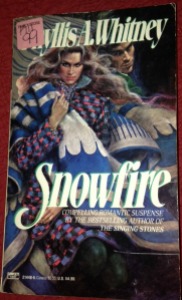 The Lark
The Larkby E. Nesbit
Publication Date: March 21, 1922
Genre: fiction
Pages: 269
Project: a century of women, furrowed middlebrow
“Everything that's happening to us—yes, everything—is to be regarded as a lark. See? This is my last word. This. Is. Going. To. Be. A. Lark.”
It’s 1919, and Jane Quested and her cousin Lucilla are pulled suddenly from school by their guardian, who sets them up in a cottage on the fringes of London and informs them (by letter, since he’s already fled) that he’s gambled away their inheritance but is leaving them the house and £500 to carry on with. Lucilla is disheartened, but Jane is certain it will be a lark.
With the help of a handsome man, a classic example of a “capable woman”, and a war veteran with a green thumb, the two unflappable young women set up a market garden, which develops into a guest house, which develops into—well, you’ll have to read and see. It’s true they have some difficulties as businesswomen, not to mention with housekeeping, but this is ultimately a tale fully living up to its title.
Apparently E. Nesbit, of the Psammead, the Bastables and the Railway Children, also wrote at least a few books for adults (although this felt more YA, or even, shudder, NA, than anything else). Who knew?
This book is adorable. It had a distinct Anne of the Island vibe, which is my favorite of all of the Anne Shirley books, with the two main characters, Lucilla and Jane (cousins) being pulled out of school by their guardian because he has done a bunk with basically all of their money. All they have left is a house left to them by an aunt, and 500 pounds in the bank. As it’s 1919, and immediately post-WWI, this is actually a significant sum, but it’s still not the fortune they believed they had inherited.
“Everything that’s happening to us—yes, everything—is to be regarded as a lark. See? This is my last word. This. Is. Going. To. Be. A. Lark.”
says Jane, & Lucilla falls in with Jane’s plans. The two young women move into the cottage, start a market garden, take in Pigs, or Paying Guests, meet a couple of young men, there are high jinks and failures and successes. It is unrealistic in the extreme – a riff on the “plucky orphan” fiction that is so popular with British authors, but it’s so charming that I just didn’t care. This is my last word. I. Just. Didn’t. Care.
There are hints of reality that intrude. Of the two young men, one, Mr. Dix, is a former POW who can’t find a job because England was doing a really terrible job of supporting it’s returning soldiers. Jane and Lucilla are confronted with the shocking reality of the prospects for these young men when they, on a whim, hire him as their gardener. And, there are references to the unconventionality of their behavior.
Interestingly, the book doesn’t actually end with Jane and Lucilla married, or even engaged. Jane is definitely coupled up, but isn’t ready to marry, and Lucilla’s prospects are even more obscure.
This is one of the Furrowed Middlebrow titles that has been dug up and republished by Dean Street Press, and it’s available in both print and on kindle. Their kindle prices, in particular, are extremely reasonable. I think I paid $2.99 for my ebook copy. I’ve liked everything I’ve read from this imprint, and have several others available on my kindle. If you enjoy early-twentieth century British women writers who wrote light fiction, in the vein of D.E. Stevenson or Angela Thirkell, you might enjoy this.
 The Crime at Noah's Ark
The Crime at Noah's Ark The Landower Legacy
The Landower Legacy Murder on the Links
Murder on the Links Snowfire
Snowfire

 Appointment with Death
Appointment with Death
 Death in the Andamans
Death in the Andamans
 Death in Berlin
Death in Berlin

 The Secret Woman
The Secret Woman Loitering With Intent
Loitering With Intent